Samsung Odyssey Ark review: 55-inches of curved monitor magnificence
The Samsung Odyssey Ark is a monster of a monitor, so it won't suit all, but it's magnificent if you can afford it
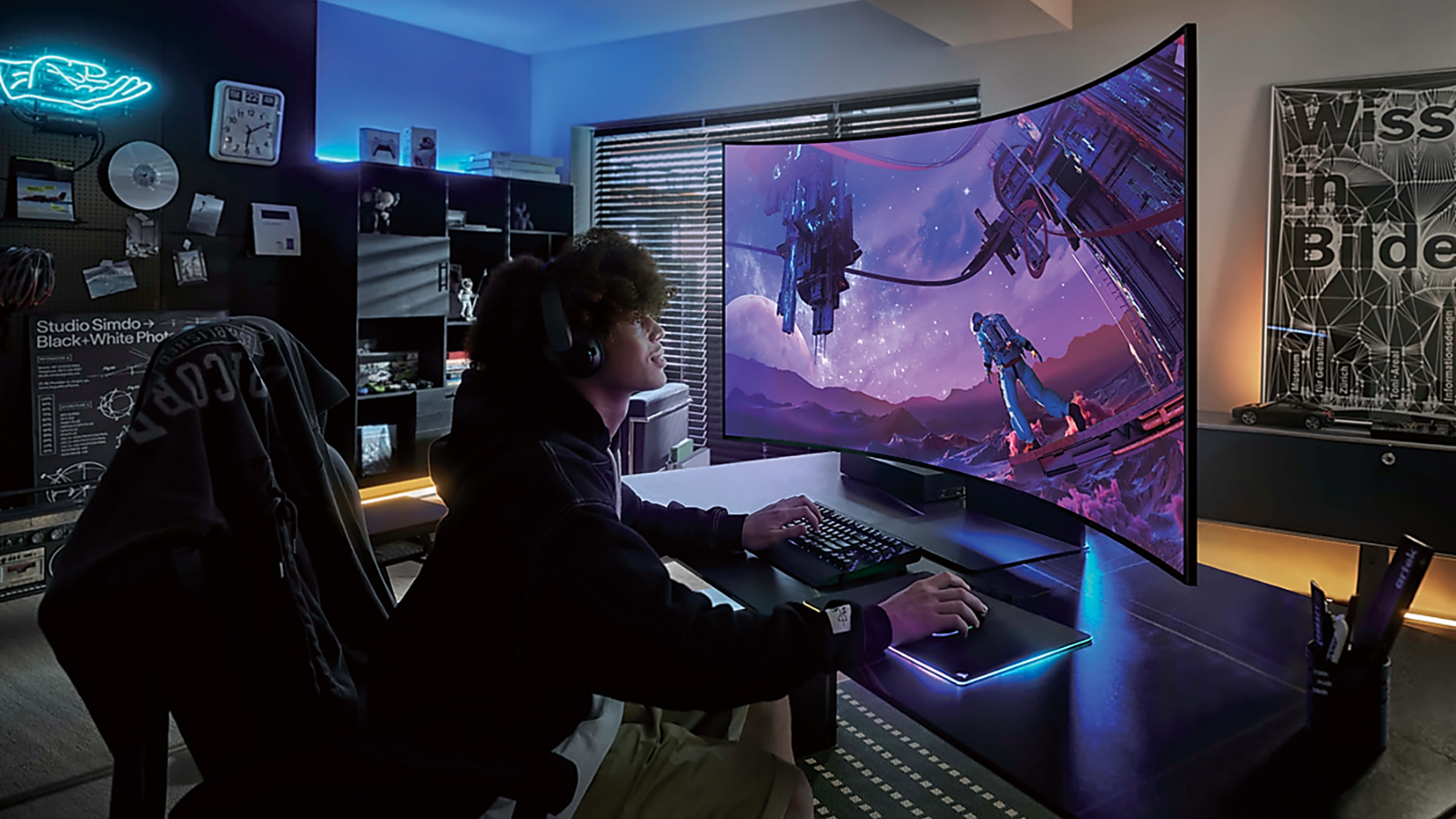
The Samsung Odyssey Ark isn't going to suit everyone given its scale. But for those who can afford it, it brings a phenomenally huge curved display that covers everything from gaming to movies to day-to-day computing to smart streaming apps.
-
+
Fantastic Mini LED picture
-
+
Superb integrated audio
-
+
Advanced remote system
-
-
Very expensive price
-
-
Two-person setup job
-
-
Only HDMI inputs
Why you can trust T3

The Samsung Odyssey Ark is clearly aiming to blow away the rest of the models on our best gaming monitor list. It's completely ridiculous, from it's gigantic 55-inch size to its portrait 'cockpit' mode, to the sheer number of different features that it has on offer.
And there is of course a price attached – a price that's going to put it beyond reach for a lot of people out there. If you can afford it though, and your requirements match up with what the Samsung Odyssey Ark brings to the table, you've got an interesting decision to make.
Our full Samsung Odyssey Ark review will tell you everything you need to know about this monitor, but as always, remember that there's plenty of other choices around – from the best 4K monitors to the best curved gaming monitors, you've got plenty of options.
Samsung Odyssey Ark: price and availability
At the time of writing, the Samsung Odyssey Ark monitor is only available direct from the Samsung website. You'll pay £2,599 in the UK and $3,499 in the US to own one. That is of course a substantial investment, but it remains to be seen if its price will come down over time.
Samsung Odyssey Ark review: design and setup
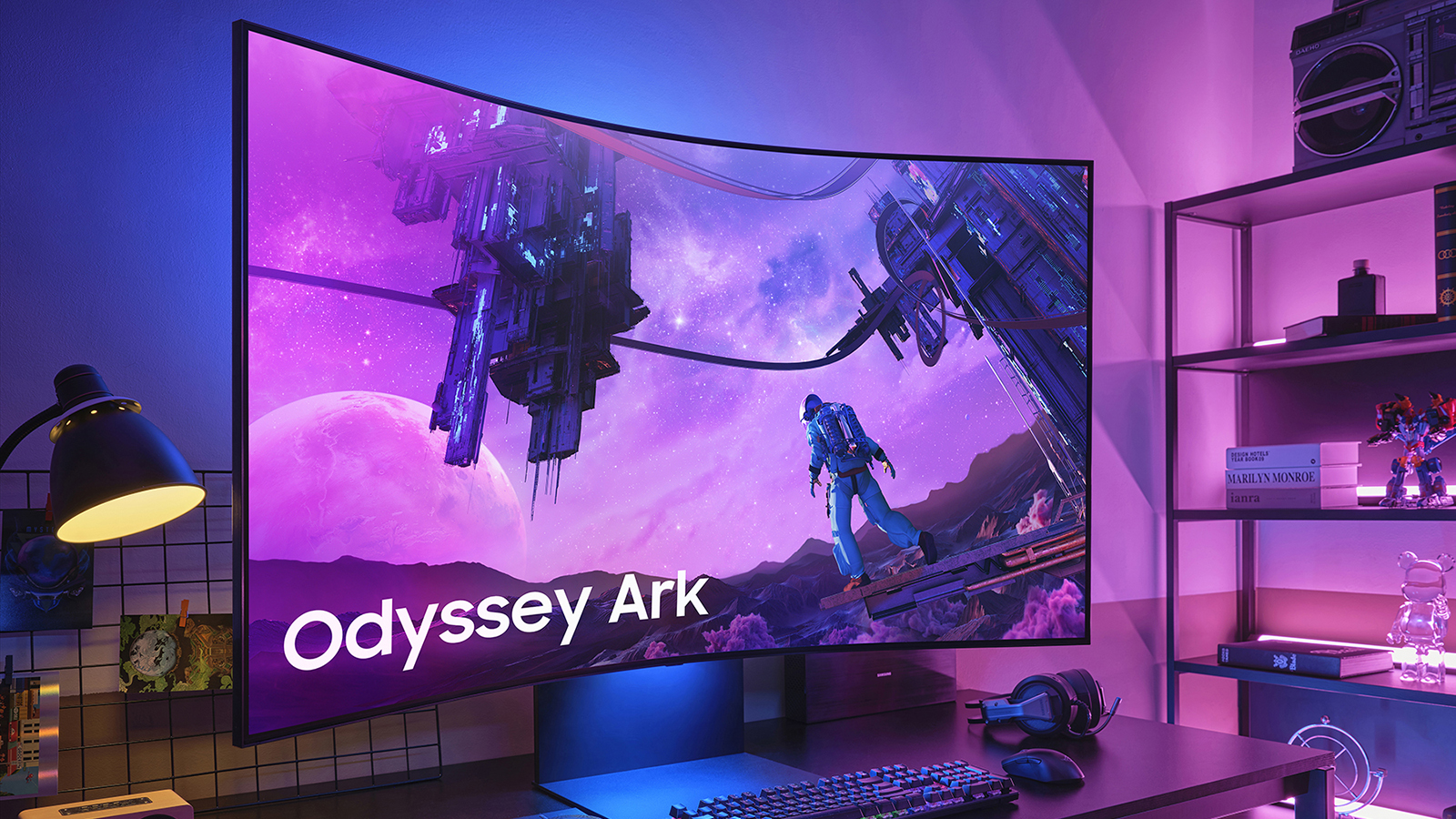
There's no doubt about it, this is an absolute monster of a monitor, and getting it assembled isn't straightforward. It's definitely a job for two people, as there are three main pieces to put together: the base slides into the stand, and the stand then clips into the back of the monitor. You're going to need a screwdriver to fasten a couple of screws, and you can then start plugging everything in – into what Samsung calls a One Connect box, which essentially handles all of the inputs, just as you'll find on its high-end TVs.
Those inputs are four HDMI 2.1 ports, plus two USB Type-A ports for connecting up peripherals if needed. There's also a headphone jack, an Ethernet port, and an optical output for a soundbar. A bit more variety in terms of display connection types would be welcome, but it's unlikely that you're going to want to hook up more than four devices together. Overall, when assembled in landscape mode, the monitor measures a gigantic 1175 x 1102 x 379 mm – do make sure that you've got enough room to get it installed. It tips the scales at a hefty 41.5 kilograms too.
Included is an Ark Dial (which is solar as well as battery powered), plus a more conventional-looking Ark Remote. You use them both in tandem to control everything from the volume to the display mode, and they're certainly easier to use than a fiddly joystick around the back of the screen (the Odyssey Ark features one of these too). These remotes and the box are solid and well built, and aesthetically fit in well alongside the monitor.
With a 1000R curvature, the idea is that the 55-inch, 3840 x 2160 pixel screen wraps around your peripheral vision. There are two RGB lighting strips along the back of the Odyssey Ark too, which you can customise in a variety of ways. Overall, we're dealing with a polished yet bulky design here, and a setup process that's about as involved as you would expect for such a large and complex piece of hardware.
Samsung Odyssey Ark review: features and picture
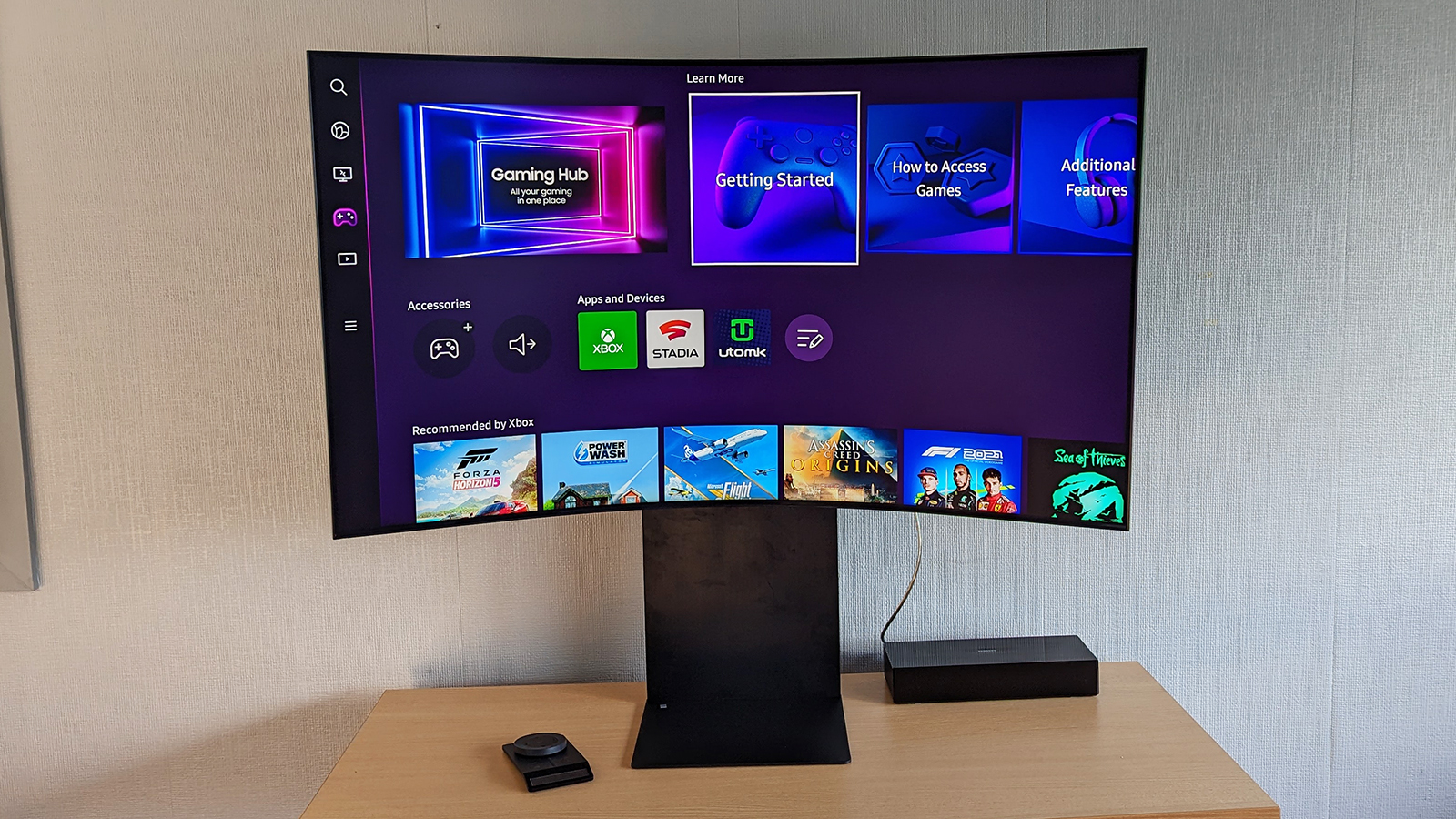
Like the Samsung M8 Smart Monitor before it, the Odyssey Ark aims to double up as both a smart TV and a monitor. Even with nothing connected to it, you can run apps from the screen: Samsung TV Plus, YouTube, Netflix, Disney Plus, Amazon Prime Video, HBO Max and others. The on-board software and indeed the on-screen menus are well designed and straightforward to navigate around, and if you're prepared to sign up for a Samsung account then you can also control the monitor from your smartphone.
There's no doubting the quality of the display panel that Samsung has fitted here: it's sharp and vibrant, with details well retained and fast motion well handled. There's a maximum 165Hz refresh rate, a 1,000,000:1 static contrast ratio, 1 millisecond grey-to-grey response time, 600 nits of typical brightness, support for Quantum HDR 2000 and HDR10+, and no fewer than 1,056 Mini LED local dimming zones. The bezels are nice and thin, especially given the size of the unit, and overall it's a superb viewing experience.
It's worth bearing in mind though that positioning matters a lot here. It's not the kind of monitor that you can sit up close to on a desk, and if you're not in the best position in terms of angle and distance then the corners of the display can start to look dim. You need to think carefully about whether you have the right space for the Samsung Odyssey Ark monitor to shine, but we had no complaints when it came to the quality of the picture, whether we were gaming, watching movies, or typing out this review.
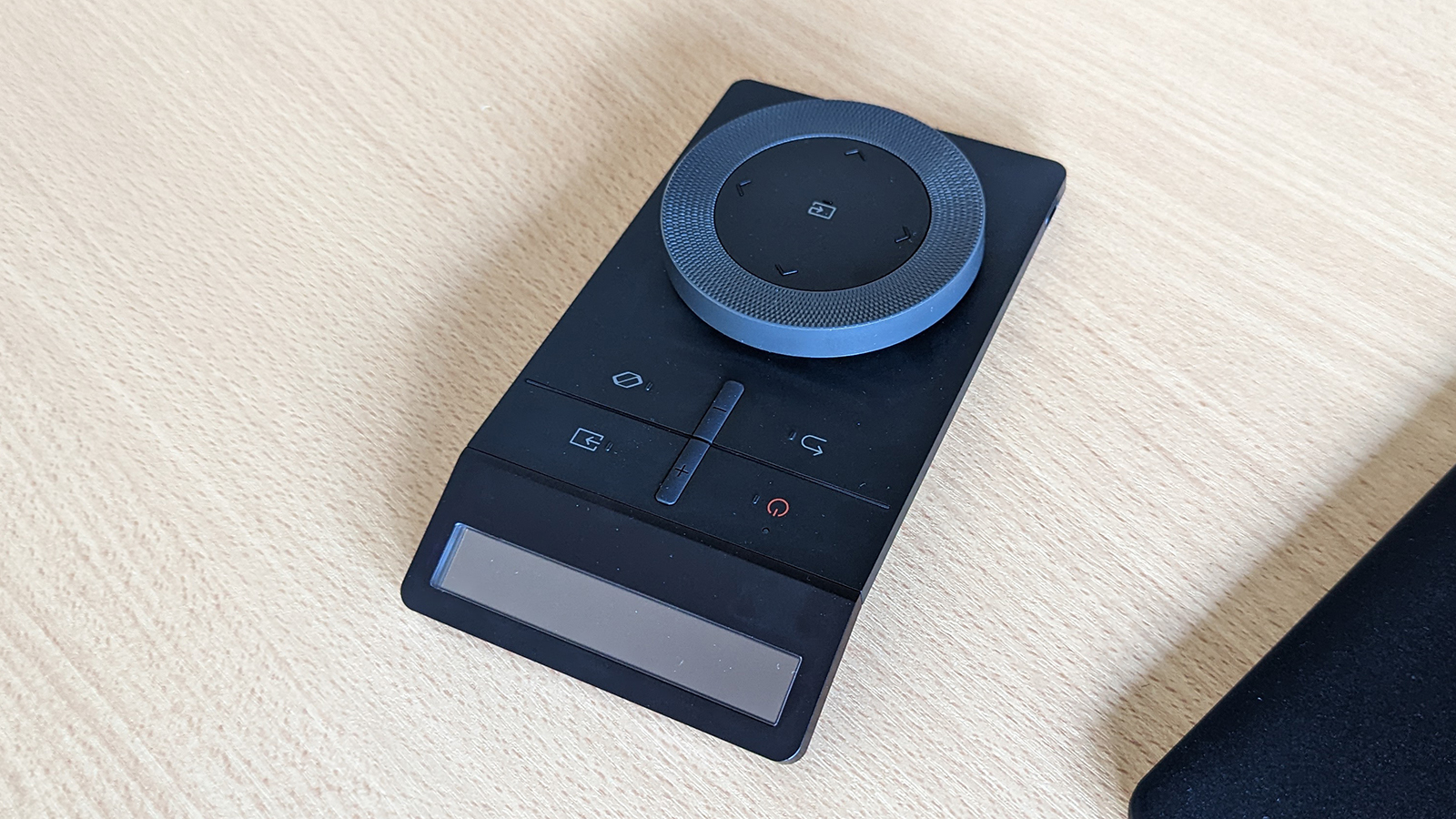
Then there's cockpit mode. The monitor can be tilted and adjusted in terms of its height, and it can also rotate around 90 degrees so it's in a portrait orientation. Here the screen looks even more ridiculous, but it's undoubtedly a feast for the eyes: you can stack three windows on top of each other if needed, enabling you to keep an eye on multiple sources at once. Multiple views are available in landscape mode too, though only one of them can be via HDMI (leaving you with apps or screen casting for the others).
Quality across the panel is really good, despite its gigantic size, although the viewing angles aren't the best. If you need a smaller viewing area, there's an integrated option for that as well – so you can get the monitor to produce the equivalent of a 27-inch screen in the centre of the panel for example, if you find that suits your needs better at certain times (and for certain tasks). It also offers a very respectable level of colour accuracy, for those working with video and image editors.
The sound setup deserves a mention on its own as well: with four corner speakers and two subwoofers in the middle, you get a 60W 2.2.2 channel setup that's seriously impressive. Only the most particular audio enthusiasts are going to want to attach external speakers to this, as the sound output is deep and rich and clear for gaming, movies and everything else. It's another area in which the Odyssey Ark actually does justify its price, and another area where it's as much a television set as it is a monitor. It can be your entertainment hub as well as screen for your consoles and computers, in other words.
Samsung Odyssey Ark review: verdict
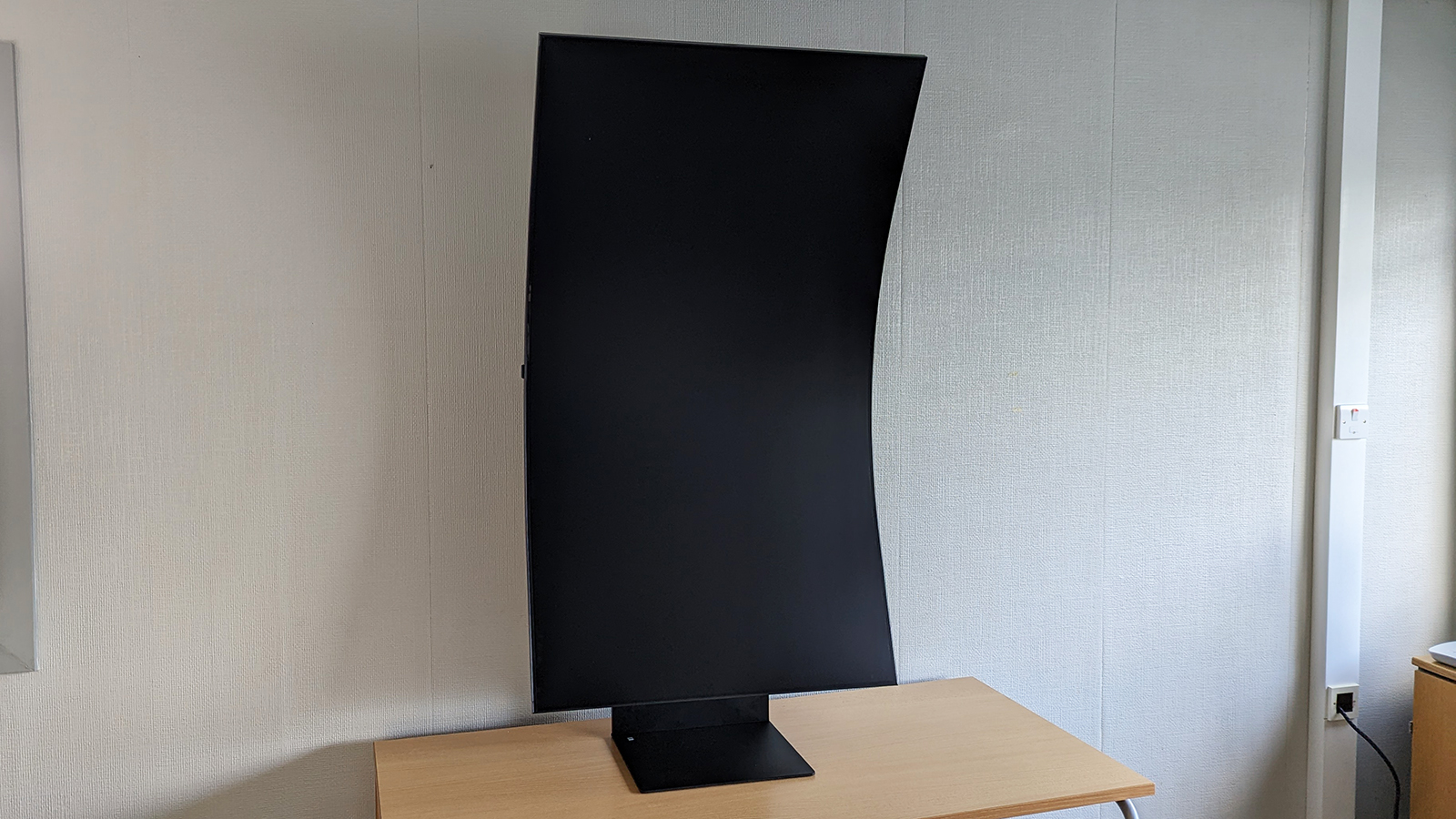
Part monitor, part smart television, part streaming hub, the Samsung Odyssey Ark defies easy categorisation and indeed easy conclusions. There's a huge amount on offer here, and it goes to some serious extremes in terms of specs and quality, but at the same it's clearly not for everyone as the price tag is going to tell you straight away whether or not this is a potential purchase for you.
What we can say is that the visuals offer up a fantastic spectacle, and the audio isn't far behind in terms of quality. For watching video content or gaming, it's a special experience, although as a standard computer monitor this feels like a bit too much. Certainly it's not going to be worth getting if you're mostly going to be building spreadsheets and checking email on this screen, and rarely using the features like cockpit mode.
We should also talk about a few missing features: there's no integrated webcam, which is a shame, and no support for Nvidia G-Sync, which would have pleased gamers even more (AMD FreeSync is supported, however). There are no USB-C or Thunderbolt or DisplayPort input options, so you have to stick with HDMI. It's not a monitor that ticks every single box, but then again we're yet to come across one that does.
Samsung recommends being around 80 centimetres away from the Odyssey Ark for the best viewing experience, although as we've mentioned you can artificially shrink down the screen size via software settings if you're going to be sat up close. That pretty much sums up the Samsung Odyssey Ark – despite everything that it's got going for it, its still a rather niche product in terms of its appeal, built for those who need a ton of functionality and are willing to pay for it.
Also consider
There's nothing else really like the Samsung Odyssey Arkout there at the moment. However, you do have alternatives: Samsung's own Odyssey Neo G9 uses the same Mini LED technology and may well appeal more to serious gamers. The screen is wider and smaller overall (a mere 49-inches corner to corner), but it also costs substantially less.
If you're happy to scale down your ambitions a little bit then the BenQ EX3410R Mobiuz is another excellent pick. You get 34-inches of screen space, a curvature of 1000R, and top-notch gaming credentials (including a refresh rate of up to 144Hz). It's not as feature-packed as the Samsung Odyssey Ark, but it's still fantastic for gaming, and it's going to cost you significantly less.
Sign up to the T3 newsletter for smarter living straight to your inbox
Get all the latest news, reviews, deals and buying guides on gorgeous tech, home and active products from the T3 experts
Dave has over 20 years' experience in the tech journalism industry, covering hardware and software across mobile, computing, smart home, home entertainment, wearables, gaming and the web – you can find his writing online, in print, and even in the occasional scientific paper, across major tech titles like T3, TechRadar, Gizmodo and Wired. Outside of work, he enjoys long walks in the countryside, skiing down mountains, watching football matches (as long as his team is winning) and keeping up with the latest movies.
-
 Warning: Ciele’s refreshed Elite Collection may cause excessive garment envy on race day
Warning: Ciele’s refreshed Elite Collection may cause excessive garment envy on race dayFlex on your run crew with Ciele’s latest drop
By Matt Kollat Published
-
 Smeg adds a touch of navy sophistication to its iconic breakfast set
Smeg adds a touch of navy sophistication to its iconic breakfast setIt's a minimalist's dream
By Lizzie Wilmot Published
-
 My most anticipated Netflix movie of the year gets a wild new trailer
My most anticipated Netflix movie of the year gets a wild new trailerHavoc looks pretty unbelievable
By Max Freeman-Mills Published